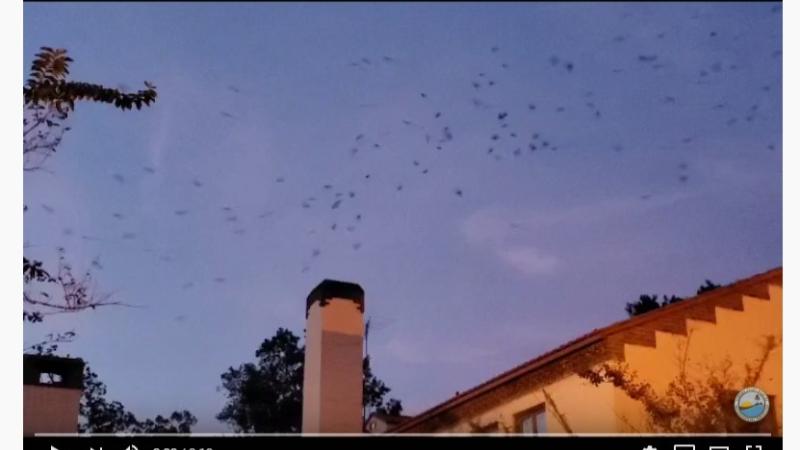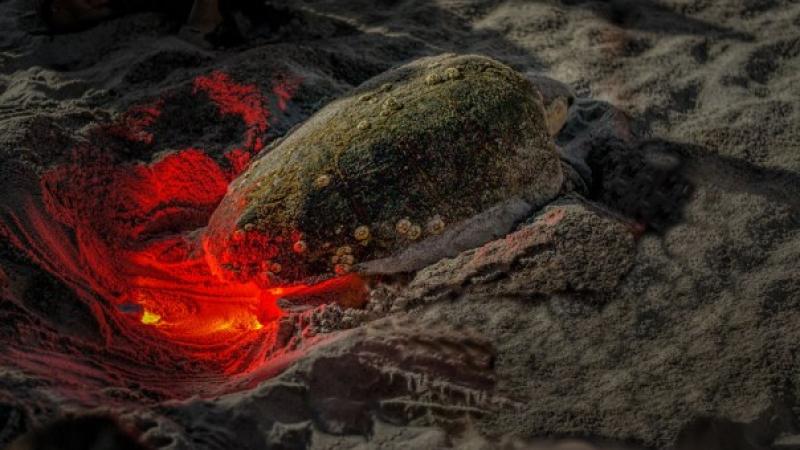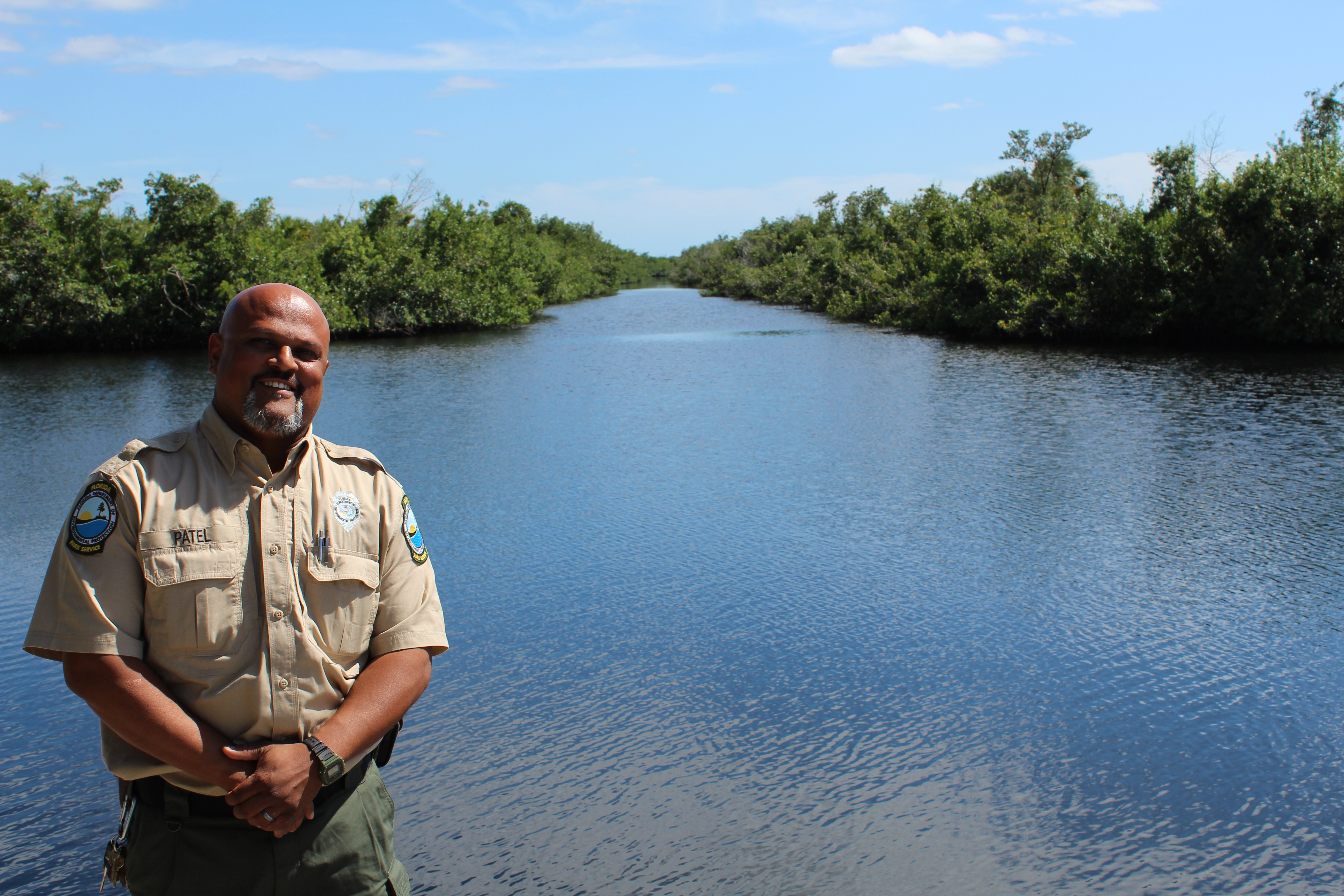
Spotlight: Getting to Know Maulik Patel
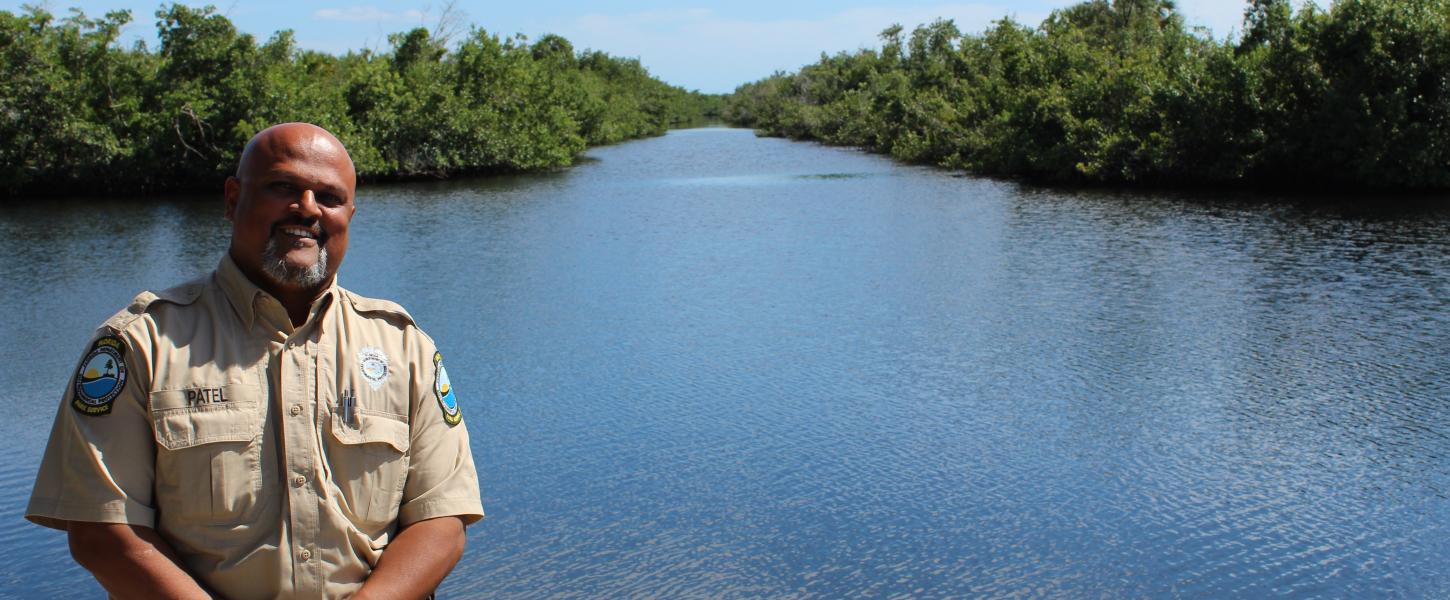
In this installment of the Biologist Tells the Story series, we have the honor of introducing Maulik Patel.

Maulik grew up in the bustling suburbs of Chicago, Illinois, where he developed a fascination for the natural world as a child. His desire to learn more about the diversity of life resulted in a zoology degree from Eastern Illinois University.
He pursued his career and gained experience in Florida through an internship as a naturalist with the Conservancy of Southwest Florida. The internship lead to a full-time position with the Conservancy where he gained additional knowledge and experience interpreting Florida’s natural resources to the public.
After a couple of years in this role, Maulik joined the Florida Park Service as a park ranger at Collier-Seminole State Park in Naples.
As a park ranger, Maulik gained experience with prescribed fire and the treatment of invasive exotic plants. Maulik was later promoted to the environmental specialist position at Estero Bay Preserve State Park, where he continued to hone his skills as a Florida naturalist and natural resource manager.
During his time at Estero Bay Preserve, Maulik joined the Southwest District’s newly formed burn team, VIPER. This provided him with a significant amount of experience handling both prescribed fires and wildfires in many different state parks and natural communities. He was a vital contributor to the team’s success for three years. He would later return to Collier-Seminole State Park as the park’s first biologist/environmental specialist.
At the 7,272-acre Collier-Seminole State Park, Maulik manages a variety of natural communities, with most of the park being freshwater or tidal wetlands. Upland natural communities include the rare rockland hammock, mesic hammocks, and fire-dependent mesic and scrubby flatwoods. The freshwater wetland communities include wet flatwoods, marl prairie and cypress-dominated strand swamp.
There are also large areas of tidal marsh and mangroves. Maulik’s work maintaining and improving natural communities through prescribed fire and invasive exotic plant/animal removal improves the habitat for a diverse group of imperiled species. Among those benefited by these efforts are the Florida panther (Puma concolor), several species of rare epiphytic orchids and air plants including the cowhorn orchid (Cyrtopodium punctatum), gopher tortoises (Gopherus polyphemus) and red-cockaded woodpeckers (Leuconotopicus borealis).

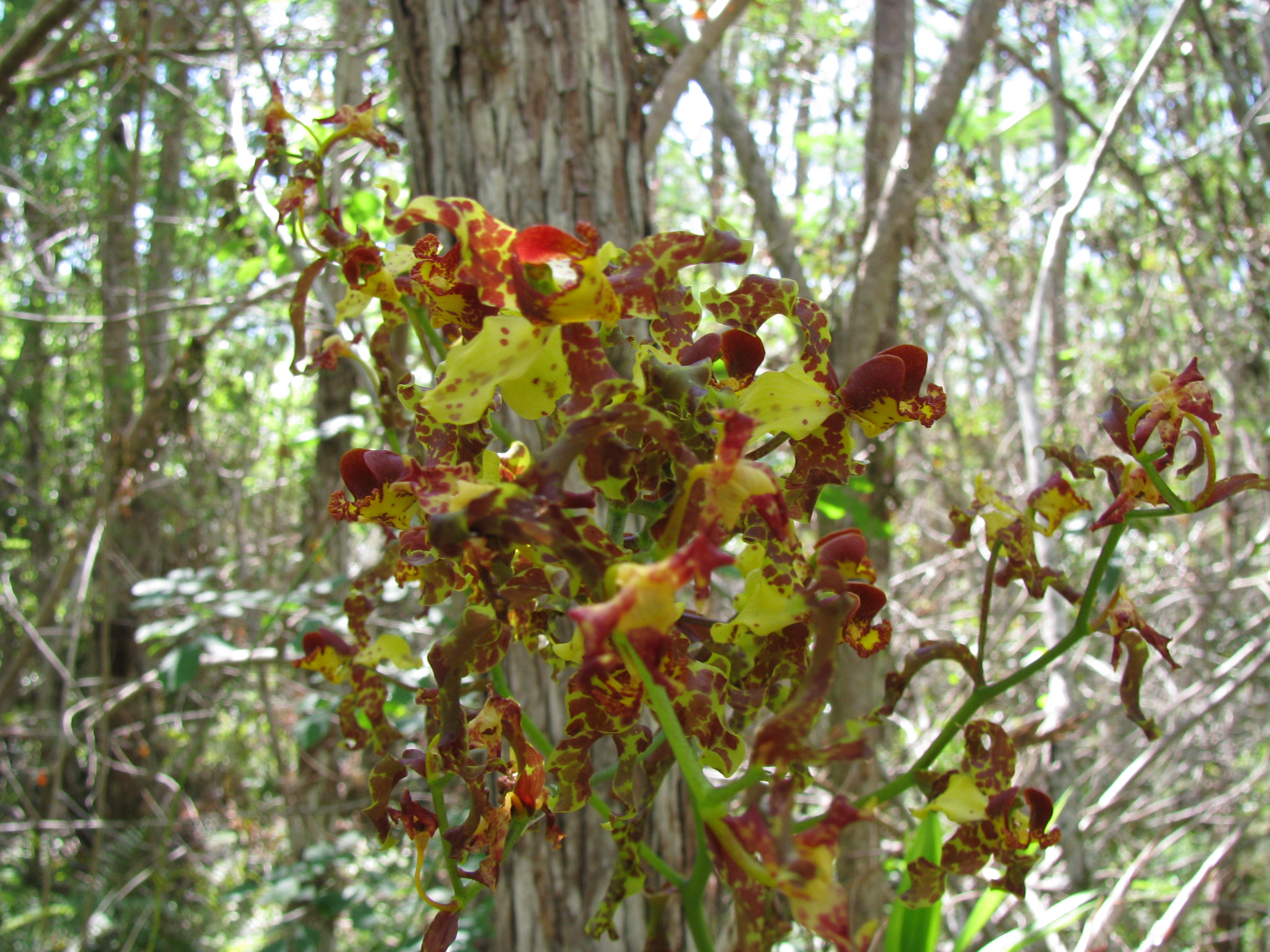
Using Fire to Manage Habitat
Some of the tools Maulik uses to keep natural resources at the park in good shape include conducting prescribed fires near major roadways, the control of invasive exotic plants and animals, and getting the water right.
Maulik has extensive experience with prescribed fire and has participated on 195 prescribed burns on 100,000 acres, and he is a certified prescribed fire manager (burn boss). The park is bisected by major roadways, including U.S. 41, which can limit the opportunities for completing ecologically beneficial prescribed fires. With good planning and preparation, however, Maulik has been successful in keeping the fire-type communities burned at the park.
Controlling Invasive Exotic Plants and Animals
Because of the subtropical climate at the park, invasive exotic plants such as Brazilian pepper, melaleuca, air potato and climbing fern, thrive and need his constant attention. Maulik’s efforts to reduce invasive exotic plants in the park include applying for grants and other funding, which has led to over $700,000 in exotic removal project funding for the park with 843 acres being treated.
Maulik is on the front line in the Burmese python (Python bivittatus) removal effort. He has assisted with the removal of several large pythons in and around the park, and he is continually on the lookout for others.
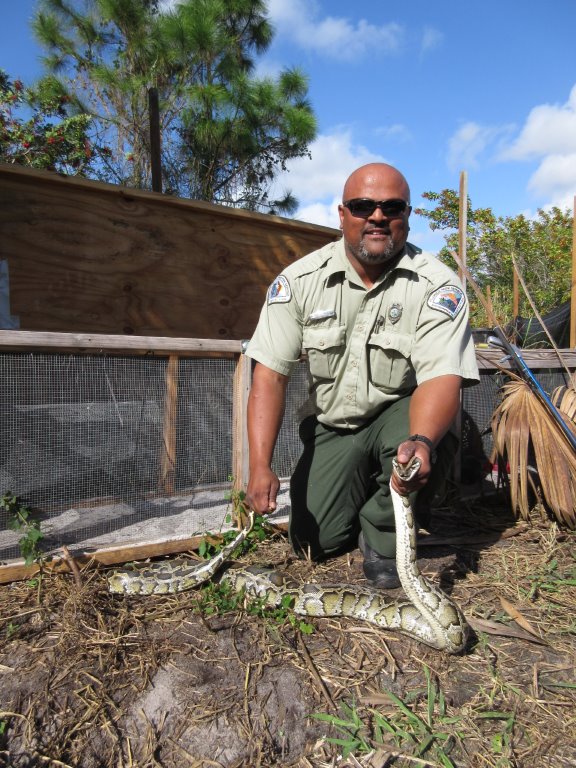
Getting the Water Right
Maulik has been closely involved in the western Everglades restoration project on the neighboring Picayune State Forest, to ensure Collier-Seminole State Park receives the correct amount of freshwater inflows from the project to keep the park’s natural communities healthy.
Historically, water flowed from what is now the Picayune State Forest into the park. Several decades ago a failed land development project constructed canals and built roads diverting water away from the natural flow-ways leading to the park.
The Picayune Restoration Project is currently underway and is designed to fill the canals and remove roadways to allow water to flow again to the park. Maulik is part of the Environmental Review Team for the project with the goal of making sure the project is designed so the park does not receive too much water (more than what historically flowed to the park) and to preserve the natural communities that historically occurred in the park.
He is also making sure the culverts and other infrastructure in the park are adequately protected from the additional flows and is advocating additional water quality and water level monitoring at the park.
Partners, Interns and College Groups
To increase resource management and monitoring at the park, and to share knowledge and assist with other conservation land management efforts in Southwest Florida, Maulik has developed a great network of partners including Rookery Bay National Research Reserve, Florida Gulf Coast University, Naples Botanical Gardens, Conservation Collier, Conservancy of Southwest Florida, Southwest Florida Cooperative Invasive Species Management Area (CISMA), Big Cypress National Preserve, Panther National Wildlife Refuge, Ten Thousand Island Wildlife Refuge, Florida Forest Service and the nearby Fakahatchee Strand Preserve State Park.
Maulik frequently has interns and college groups assist with resource management projects at the park. Maulik was instrumental in starting the Friends of the Southwest Florida CISMA, a citizen support organization, and has been involved with the CISMA since its inception.

Maulik’s goal is to leave a positive legacy at the park for those who follow. Knowing the importance of each park’s unit management plan, he is spending considerable time and effort drafting an update to the resource management sections of the Collier-Seminole State Park plan. His considerable knowledge and experience managing the natural resources at the park helped to draft a plan ensuring the continuation of his good work into the future.
Special attention in the plan was paid on proposed management actions to improve or maintain healthy south Florida ecosystems, leading to desired habitat conditions for the many plant and animal species in the park.
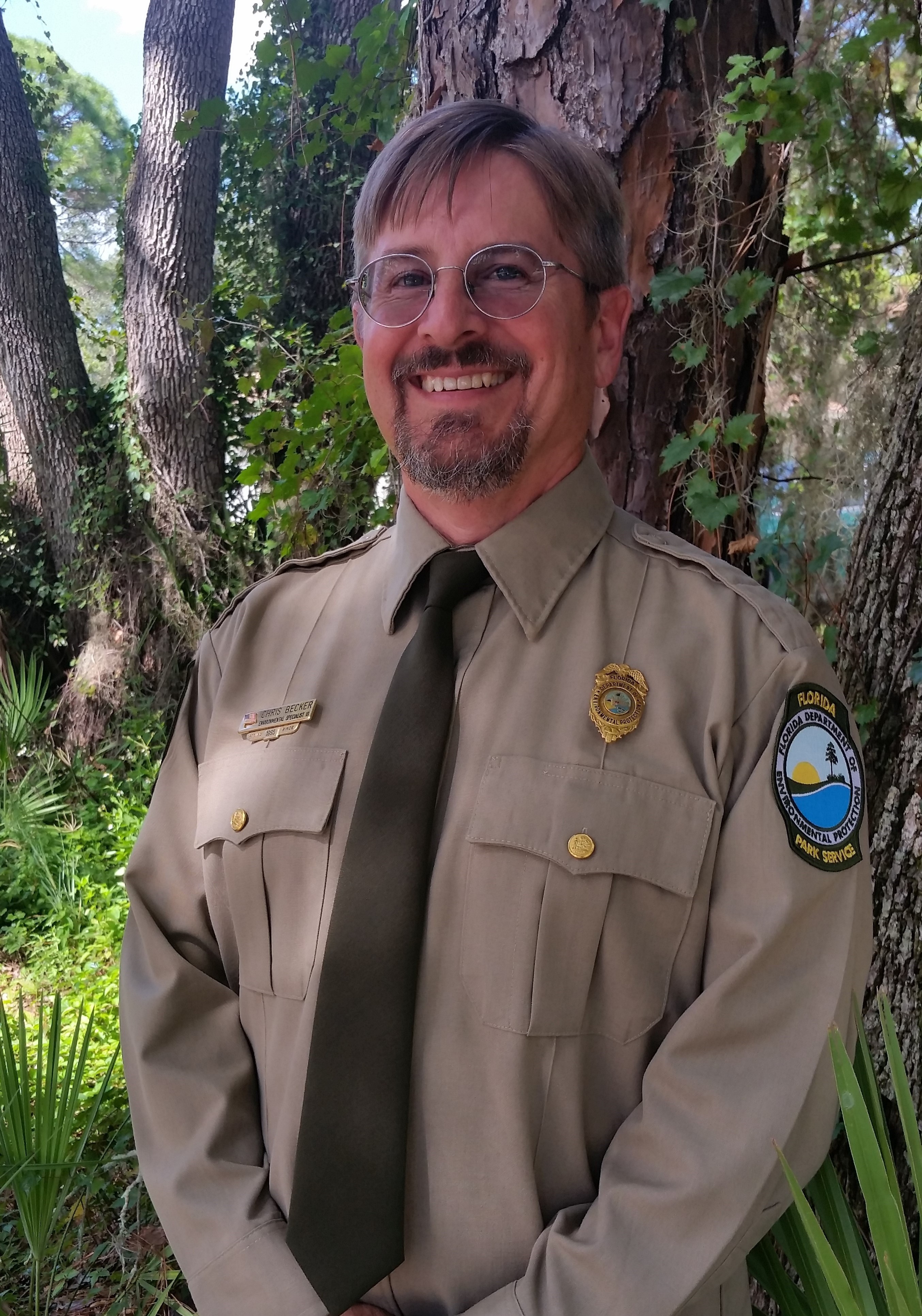
About the Author
Chris Becker received a Bachelor of Science and Master of Science degree in biology/zoology from Western Illinois University.
In 1995, he was hired as the Myakka Wild and Scenic River biologist, managing the 34 miles of the Myakka River in Sarasota County.
After 10 years as the river biologist, he transferred to a Environmental Specialist II position in District 4 to gain more experience conducting prescribed fires and was appointed to the District Burn Team (VIPER) where he served for three years, with two as the team leader.
In 2012, he promoted to the lead district biology position (or Environmental Specialist III), where he is involved with updating park management plans and guiding resource (including cultural) management projects of all types.
About The Biologists Tell the Story Series
In this series, we will learn more about our biologists as they share stories of their work in Florida’s state parks. The leadership and scientific research our biologists provide is essential for our legacy of conservation and land management. This series is an opportunity to connect these projects to the places where we ensure the health and sustainability of Florida State Parks.
